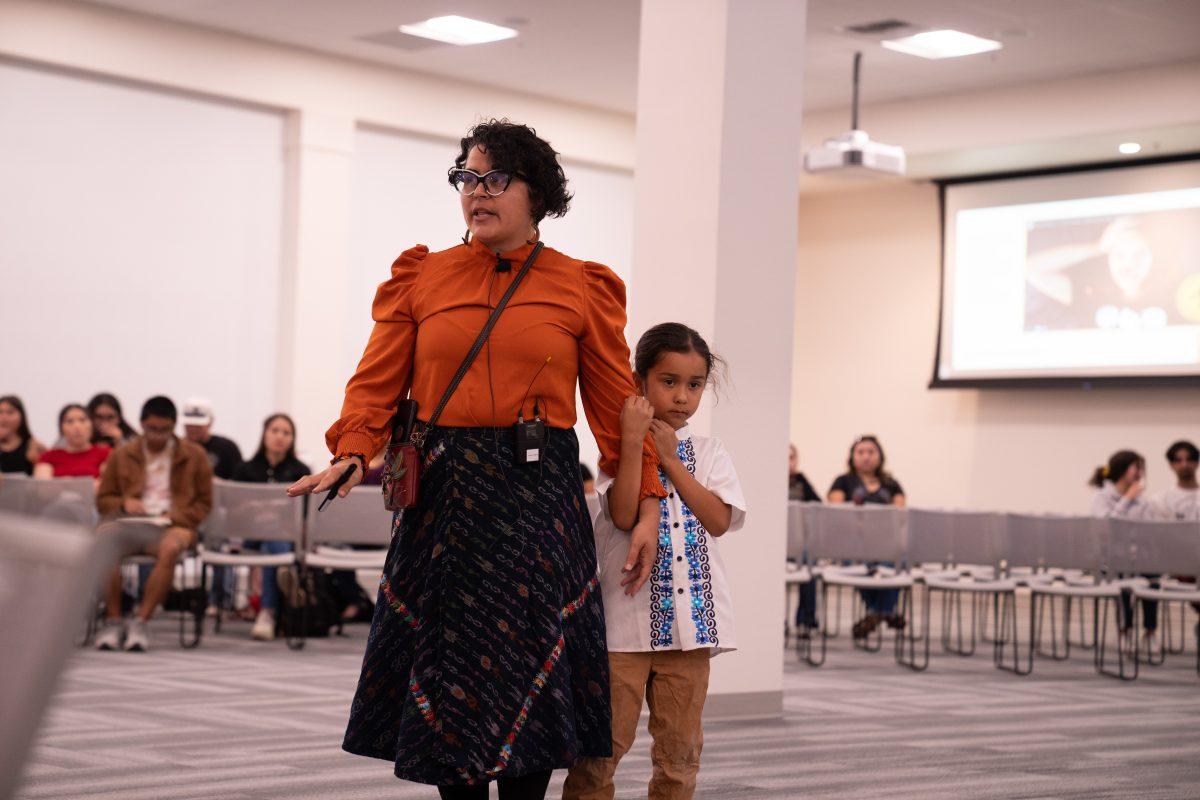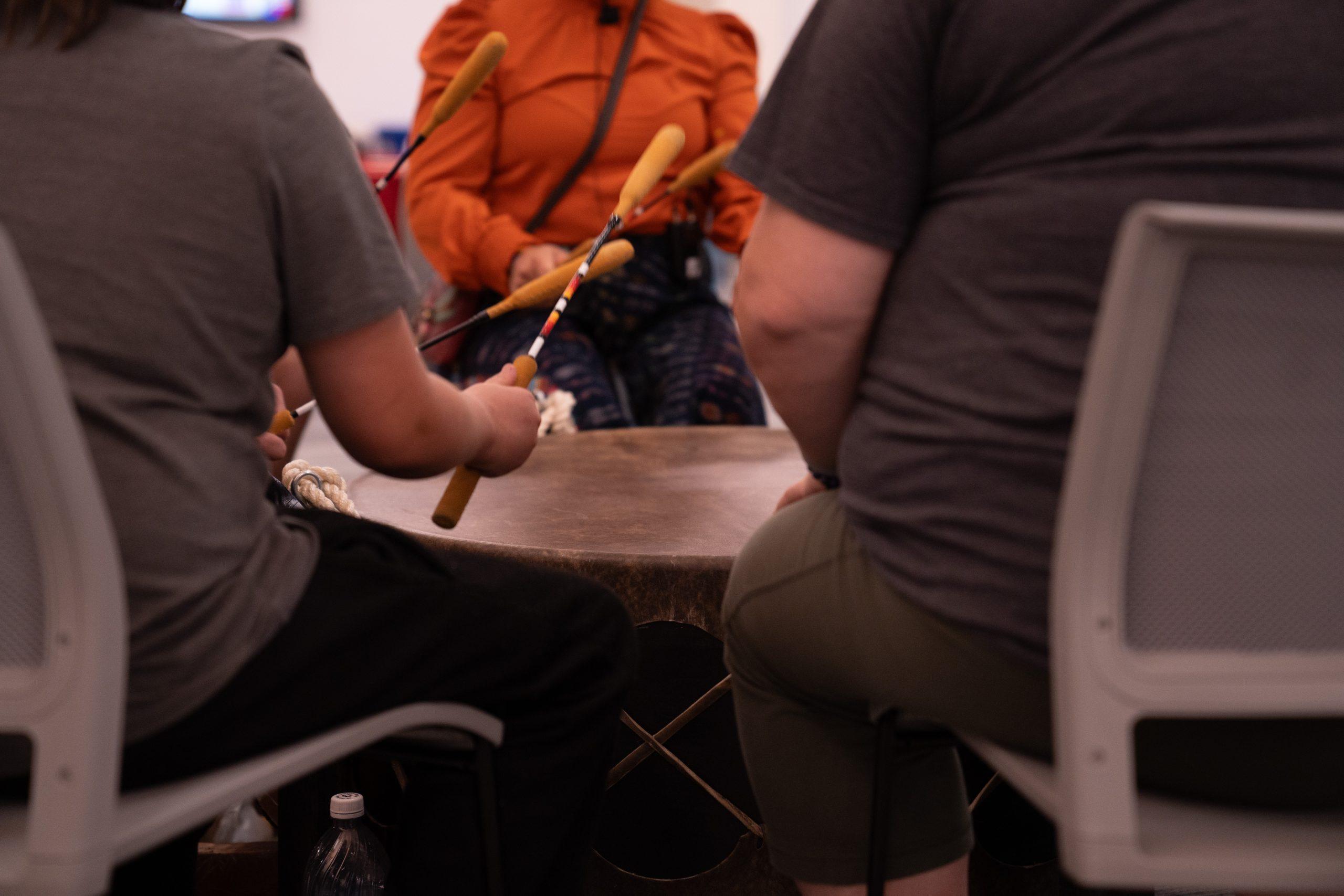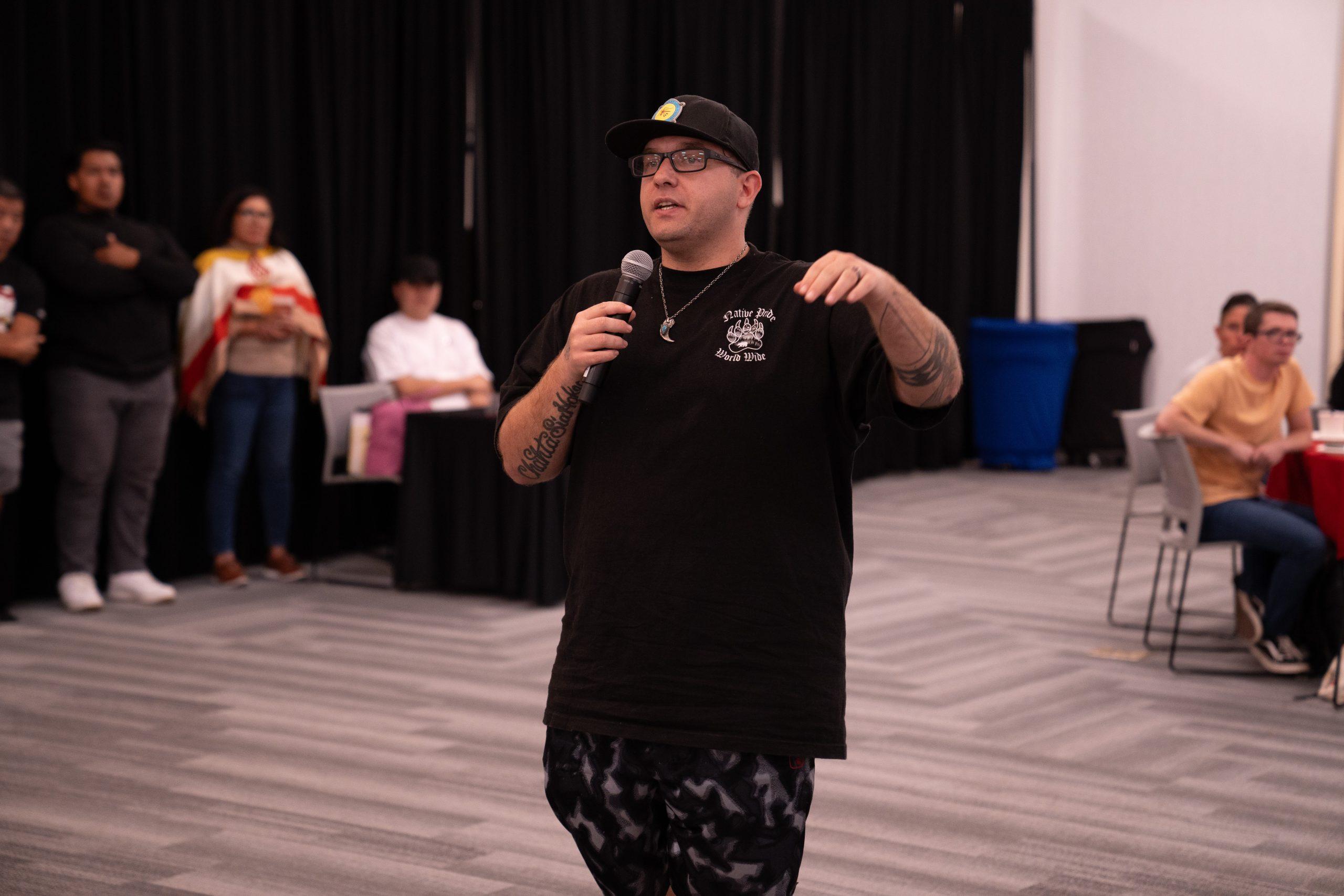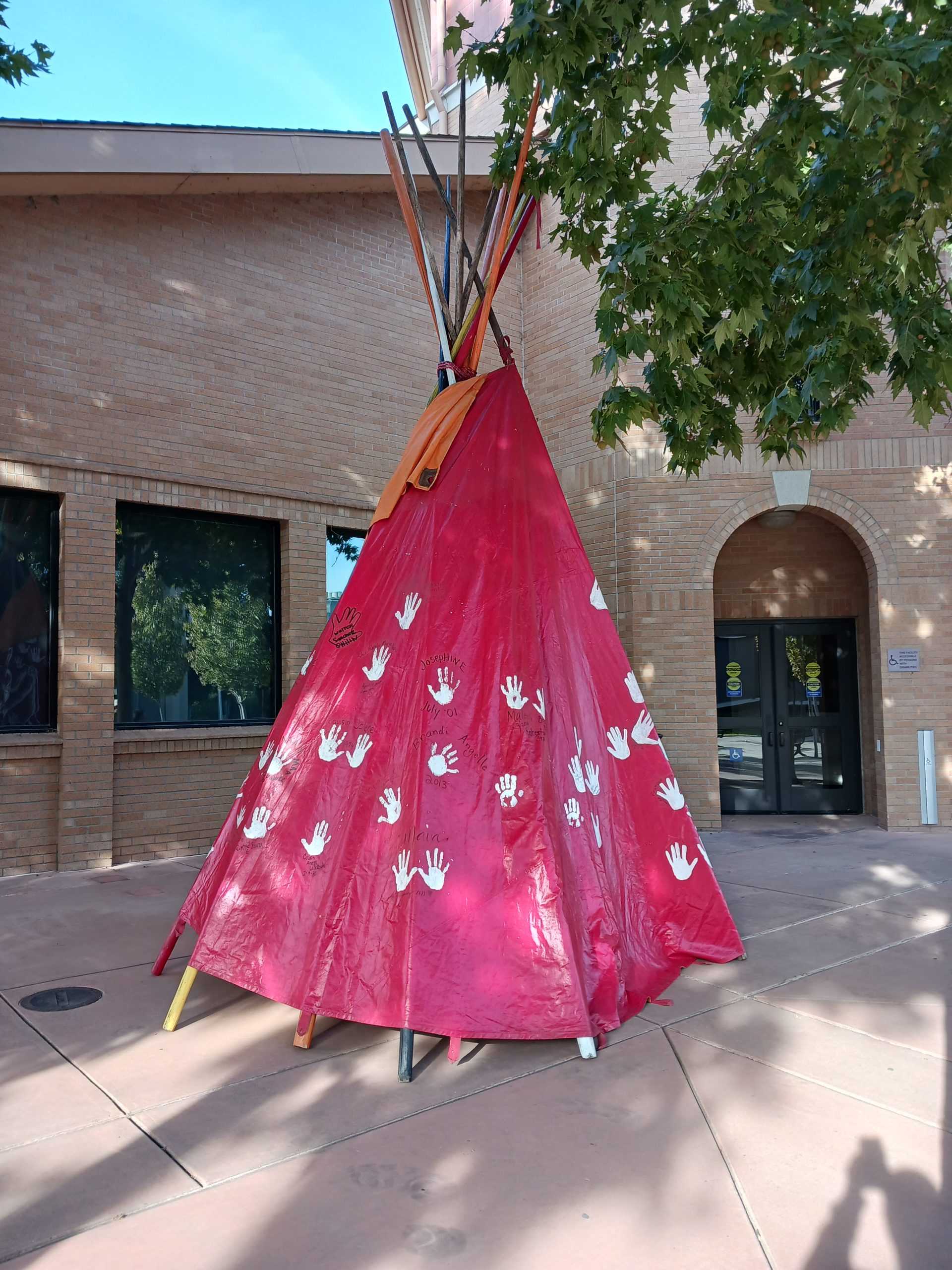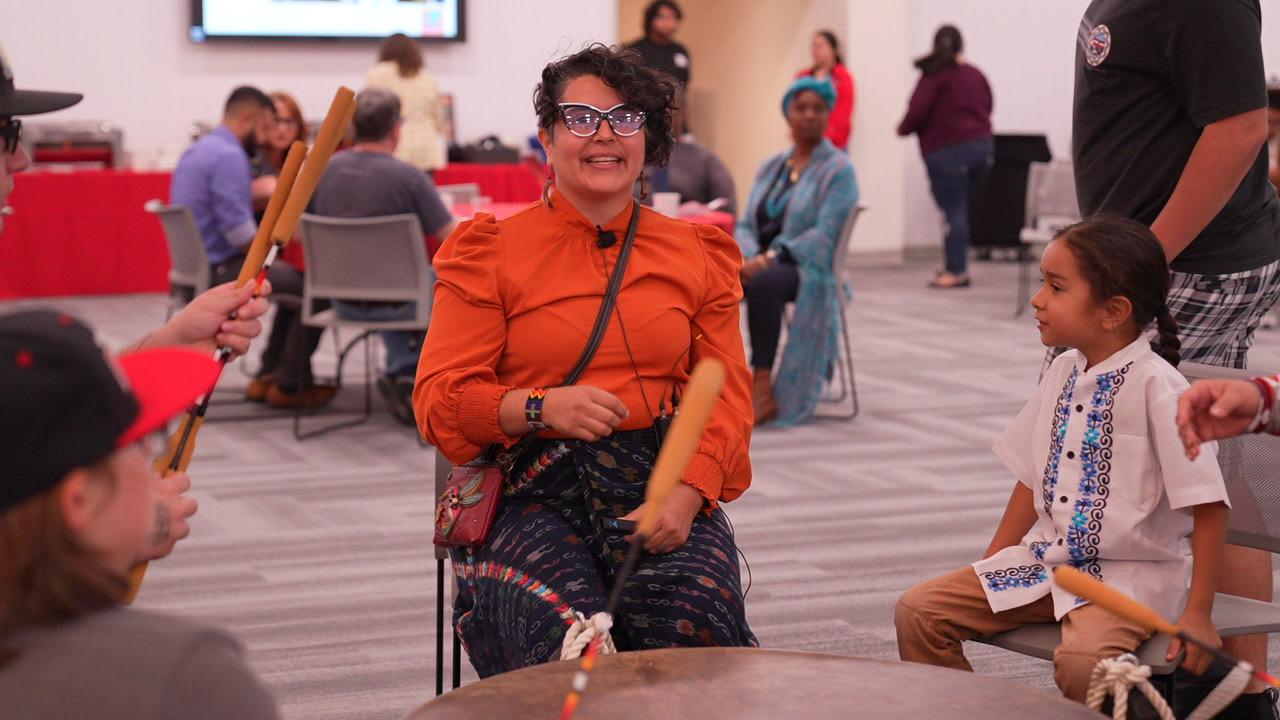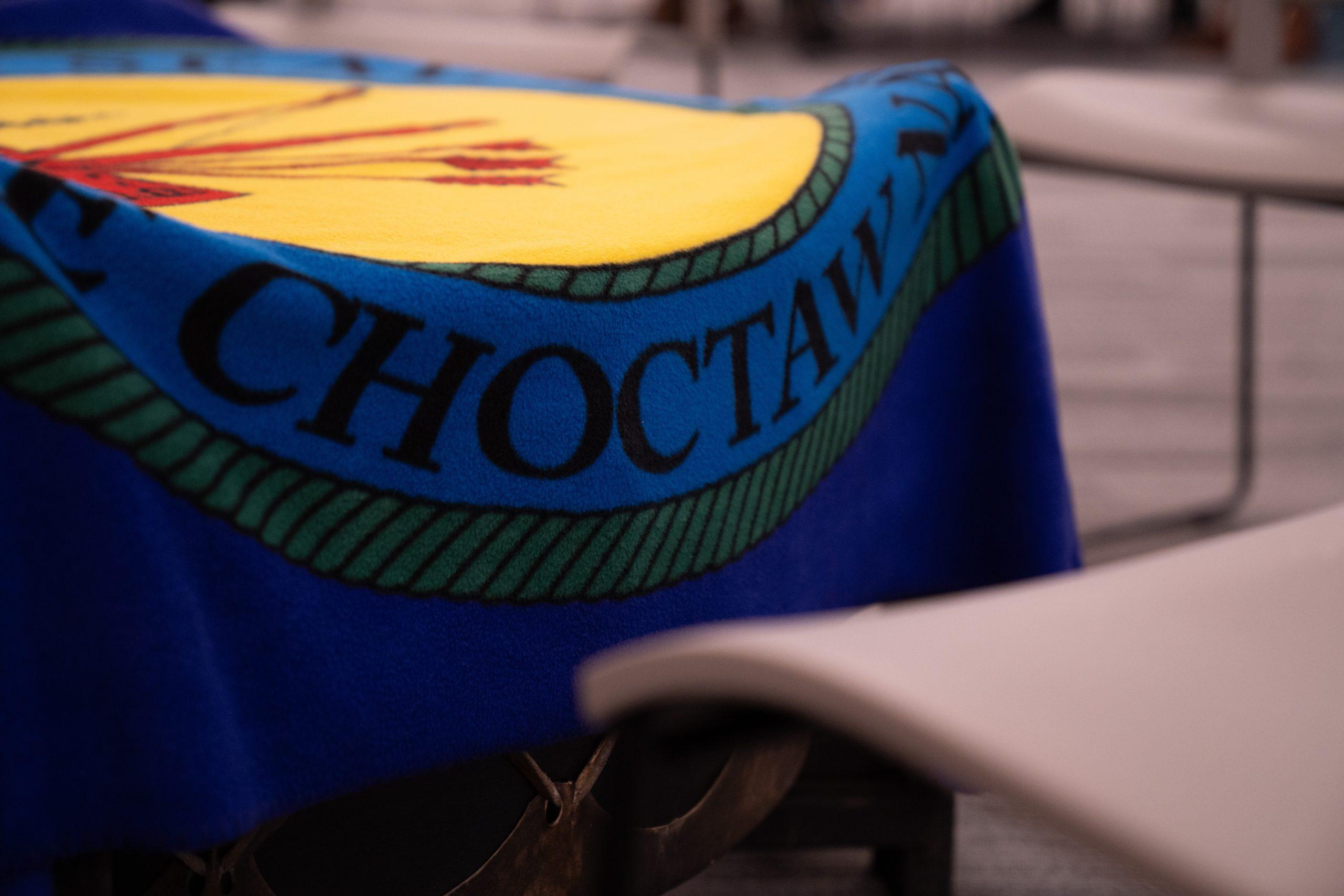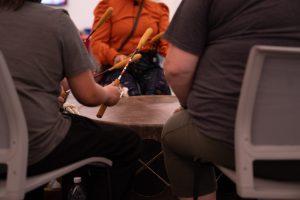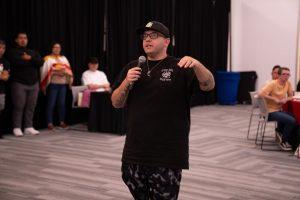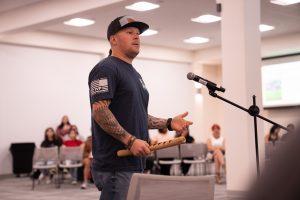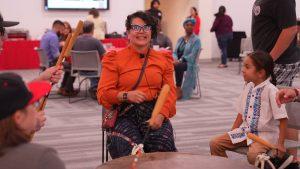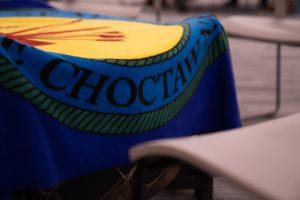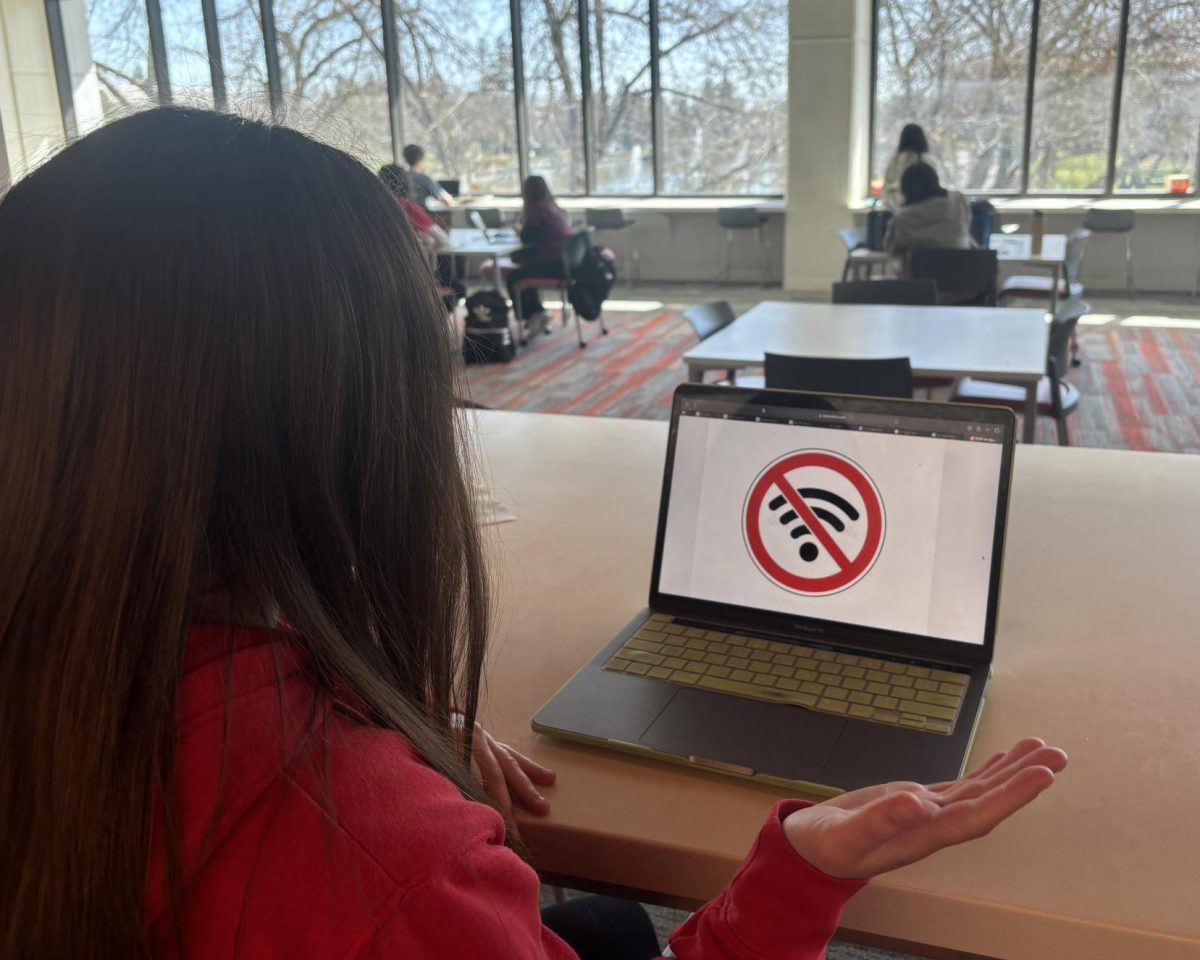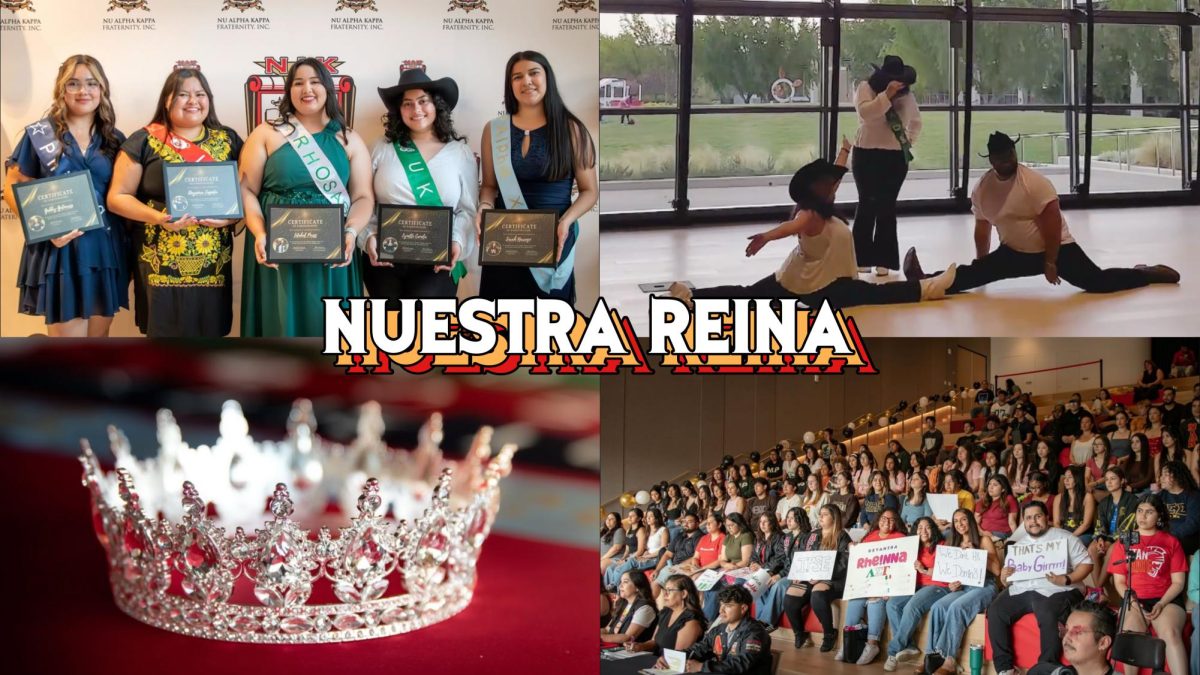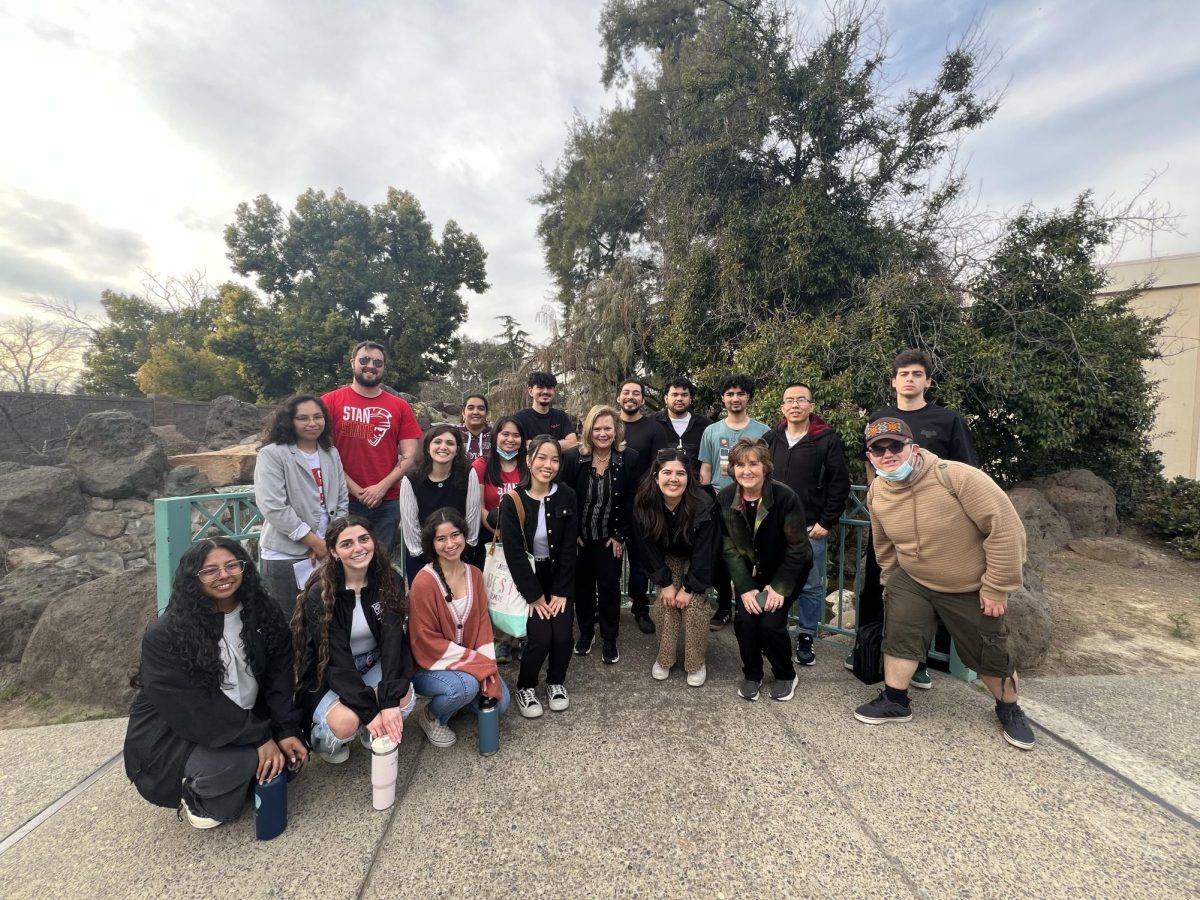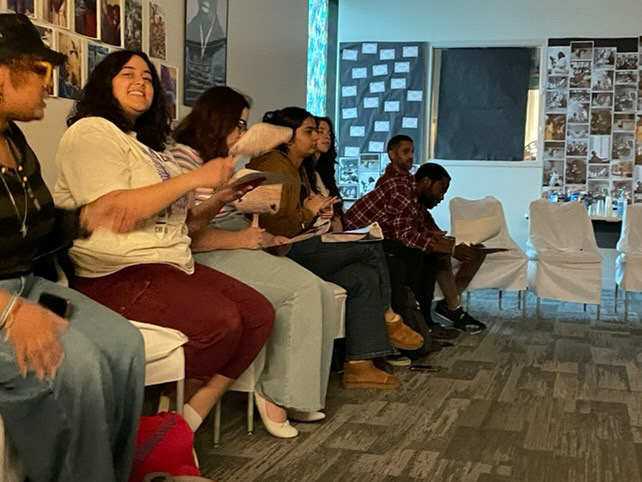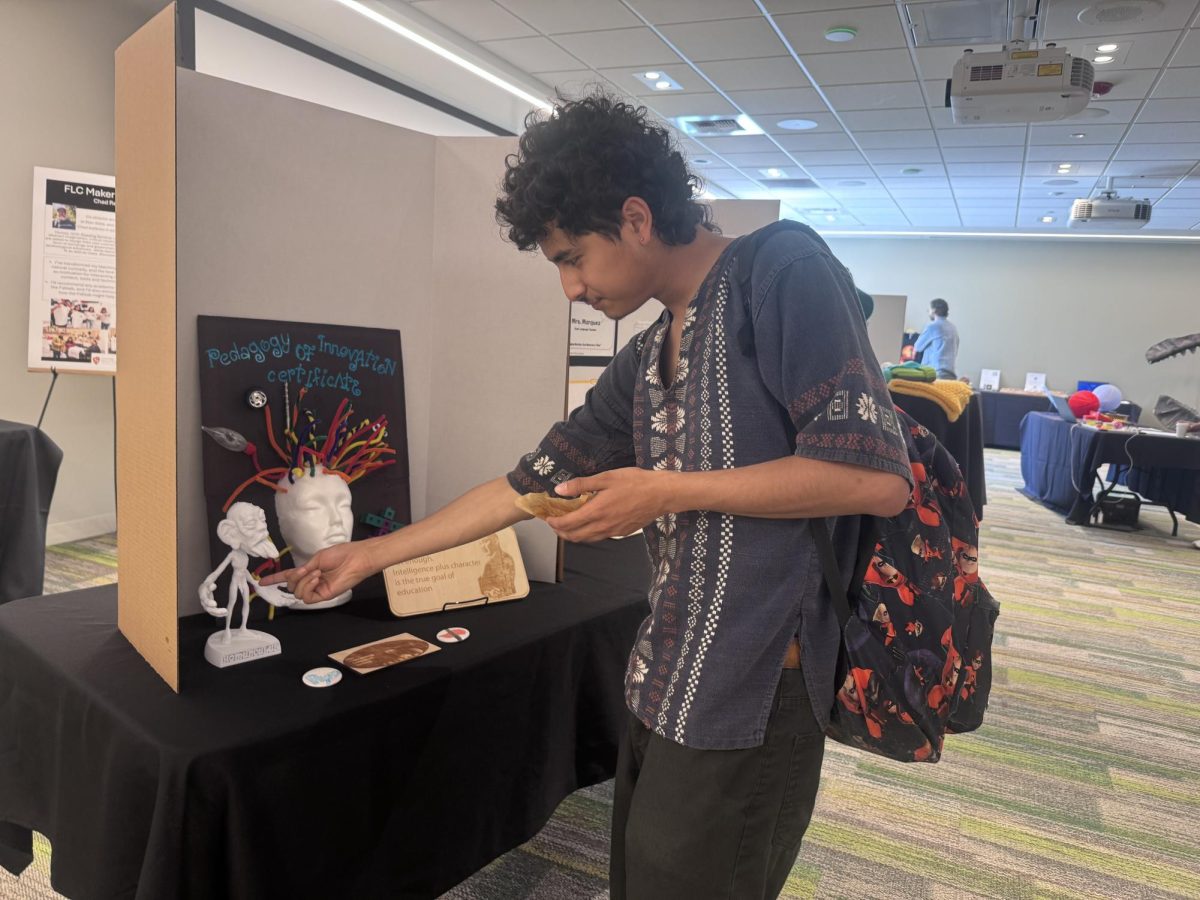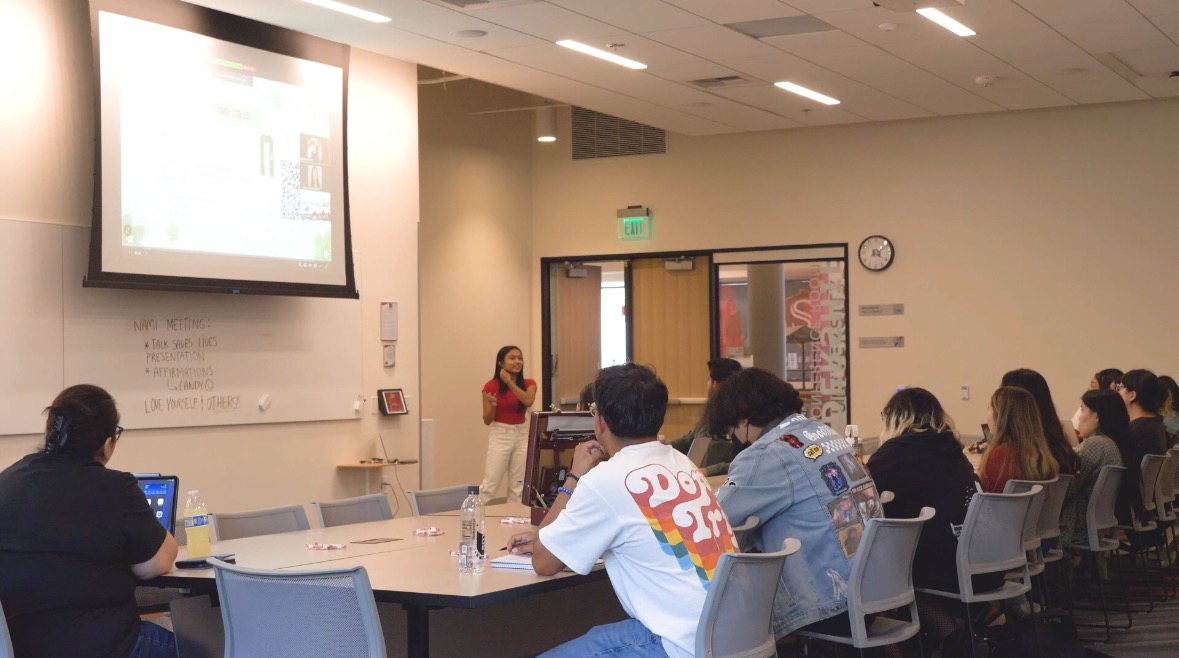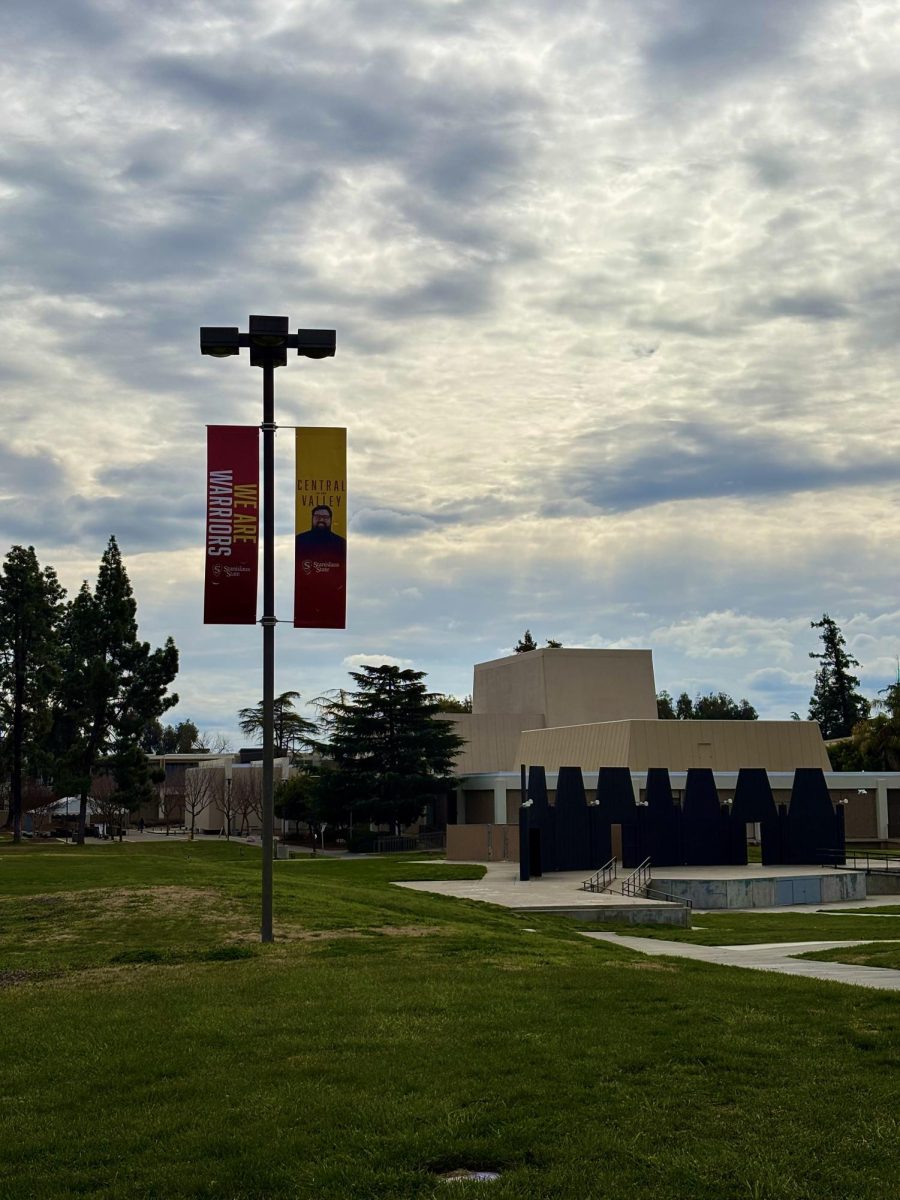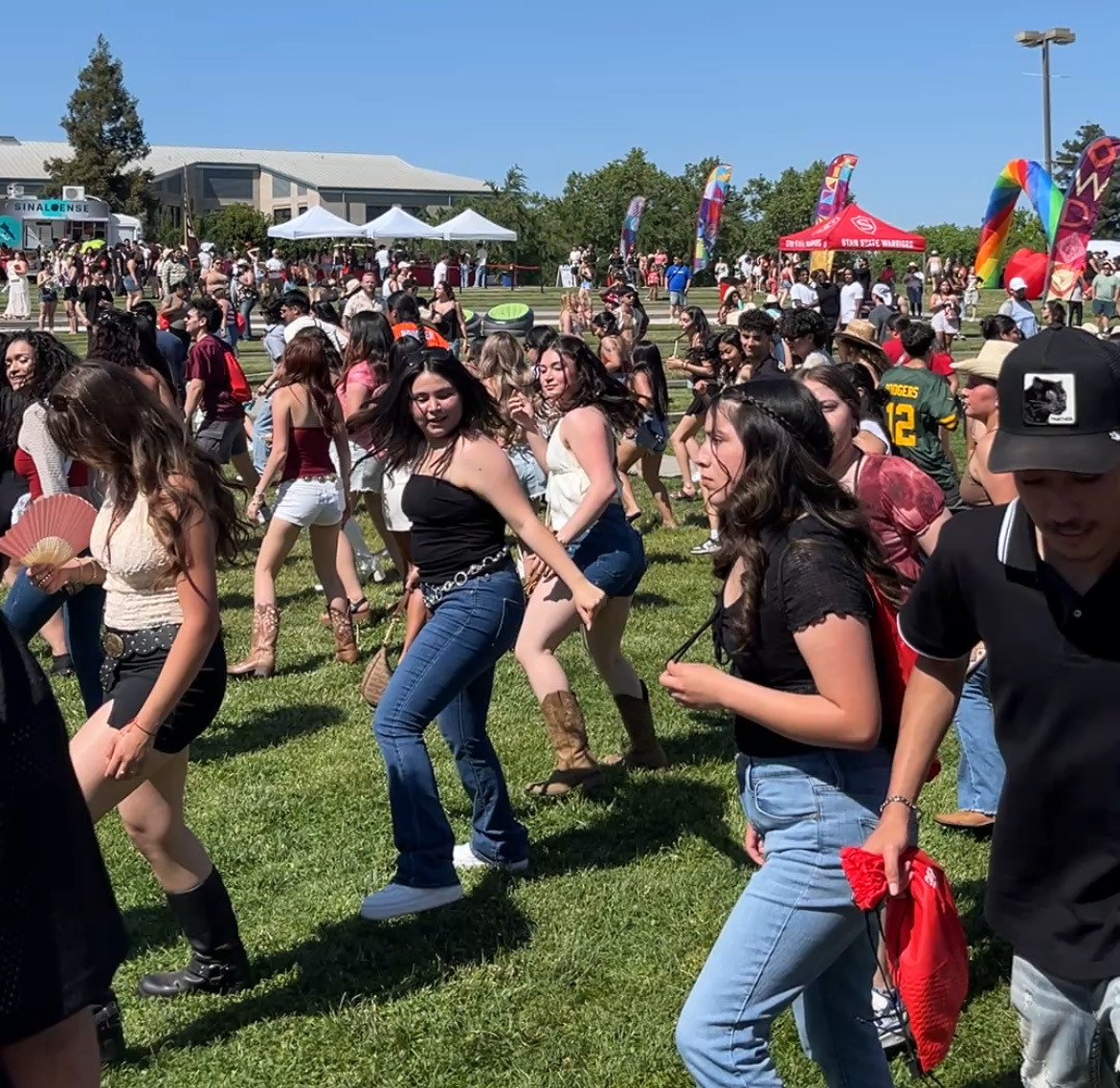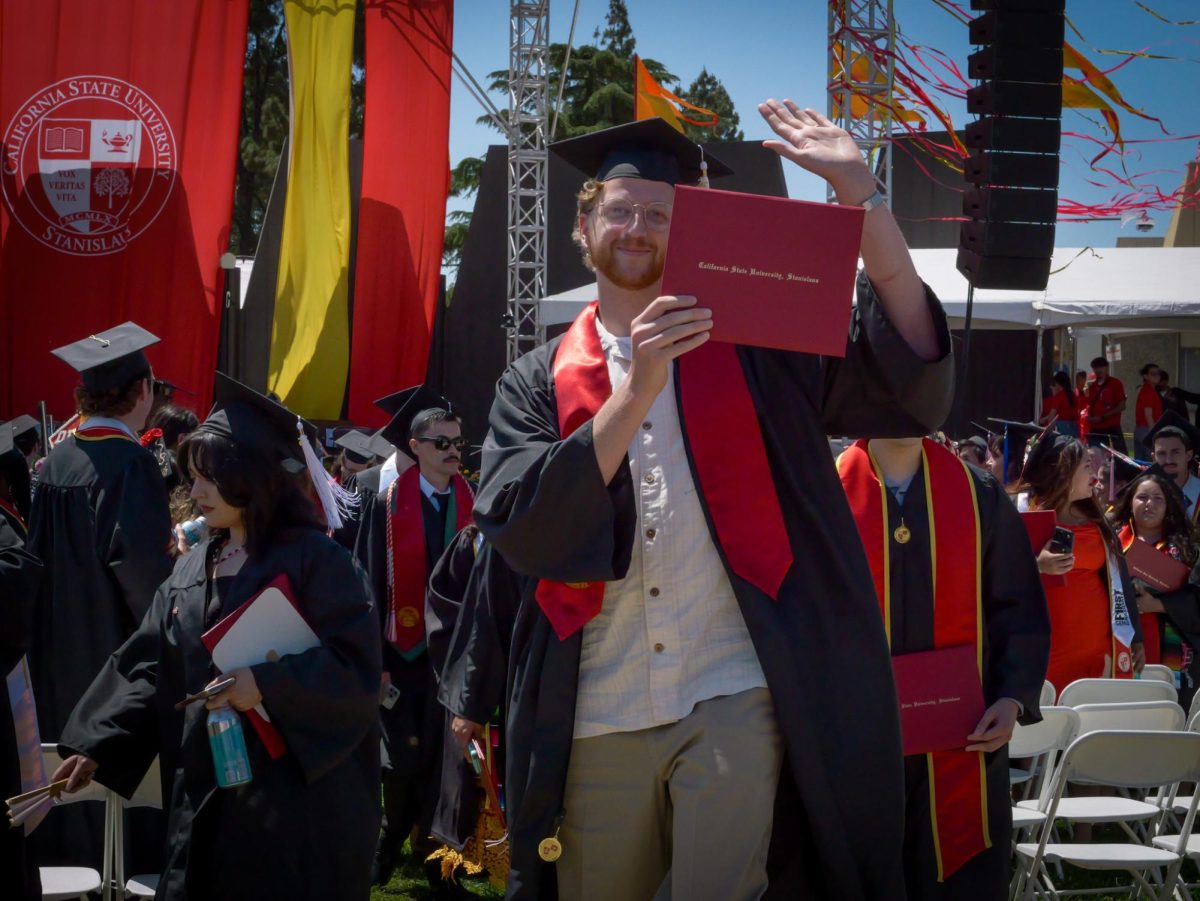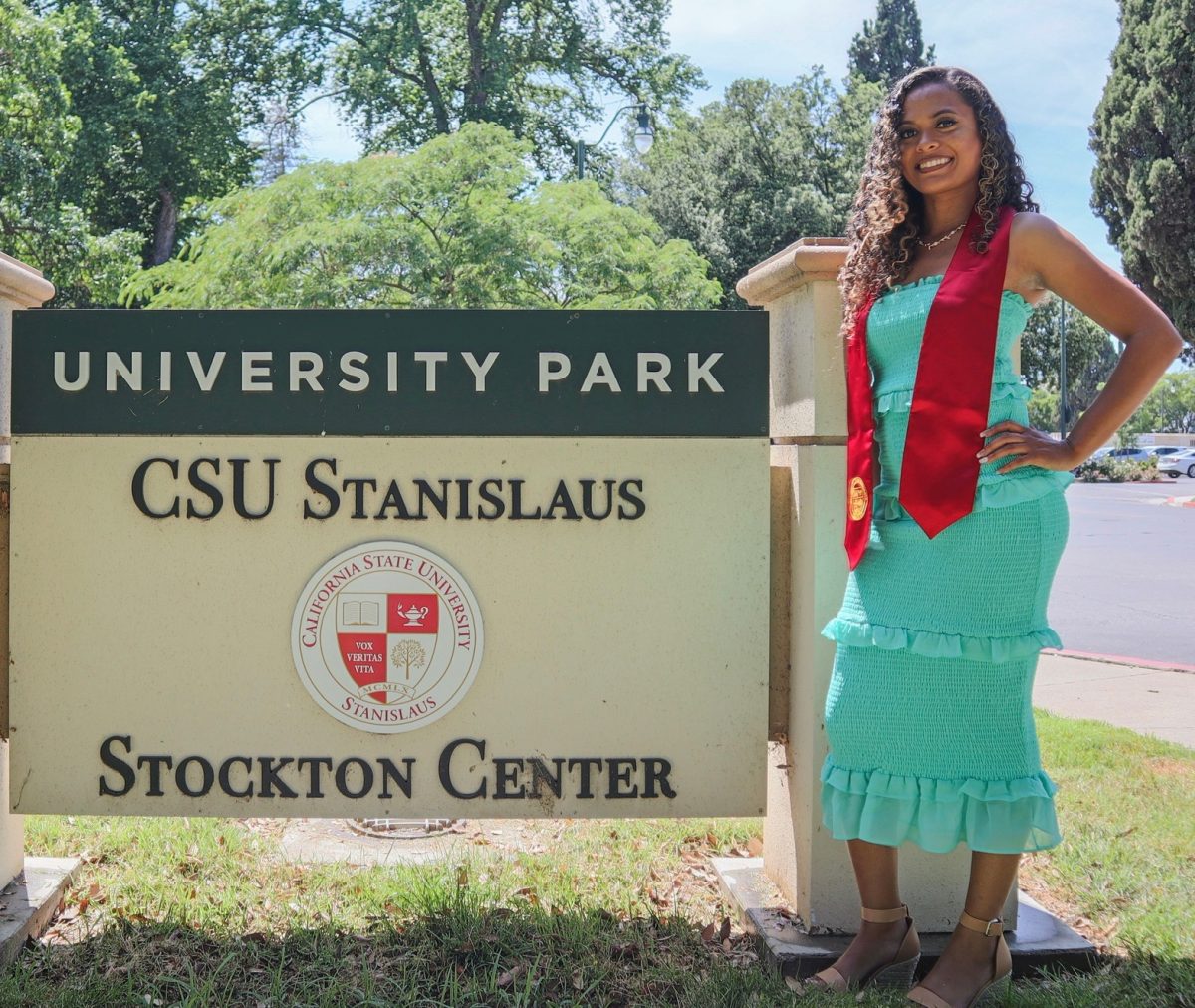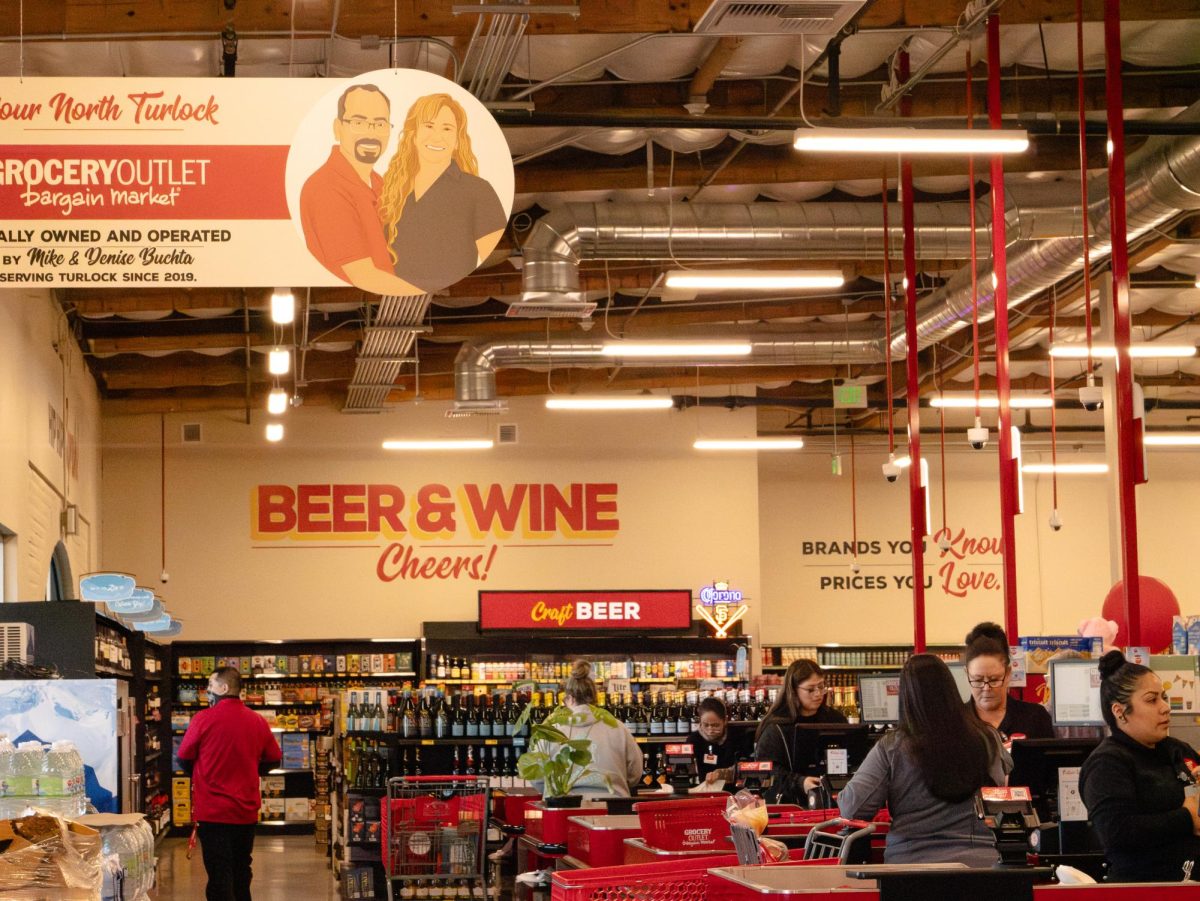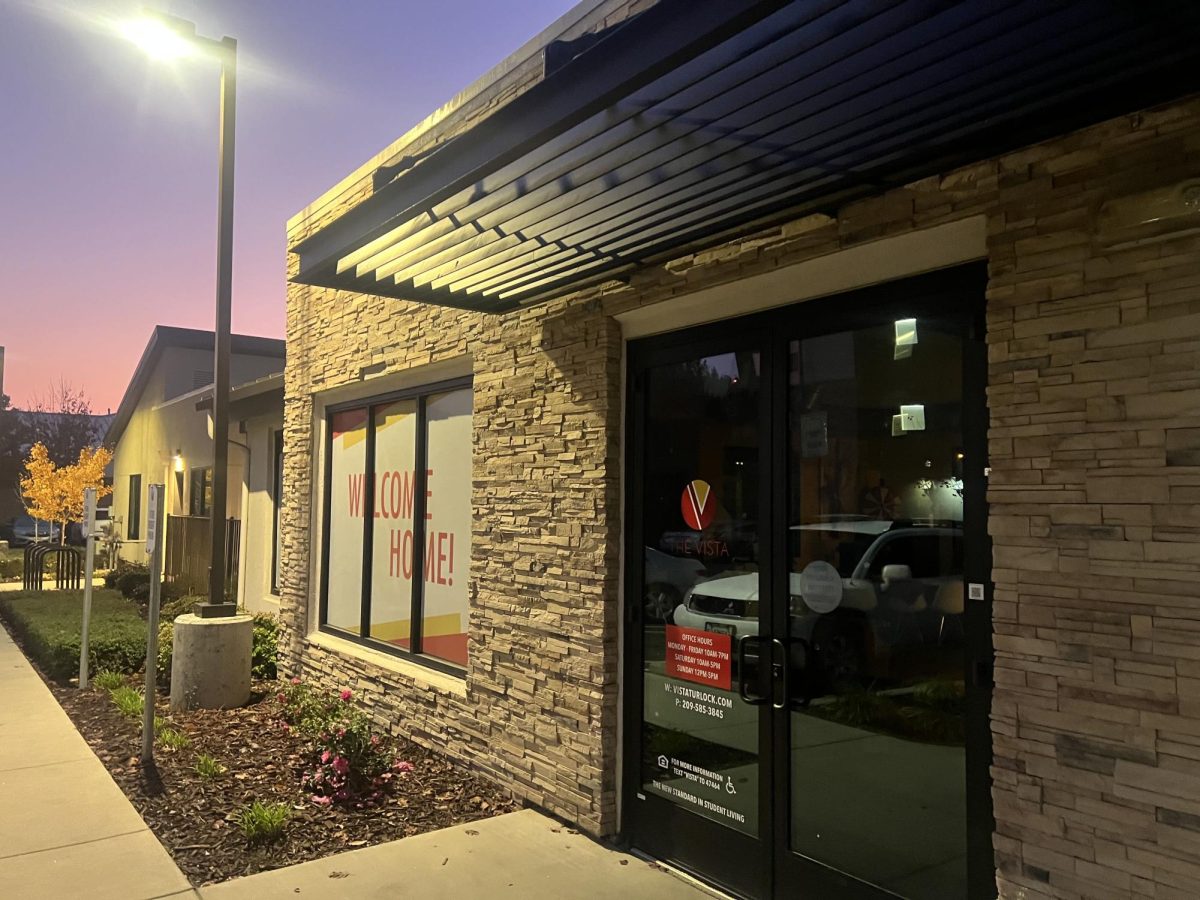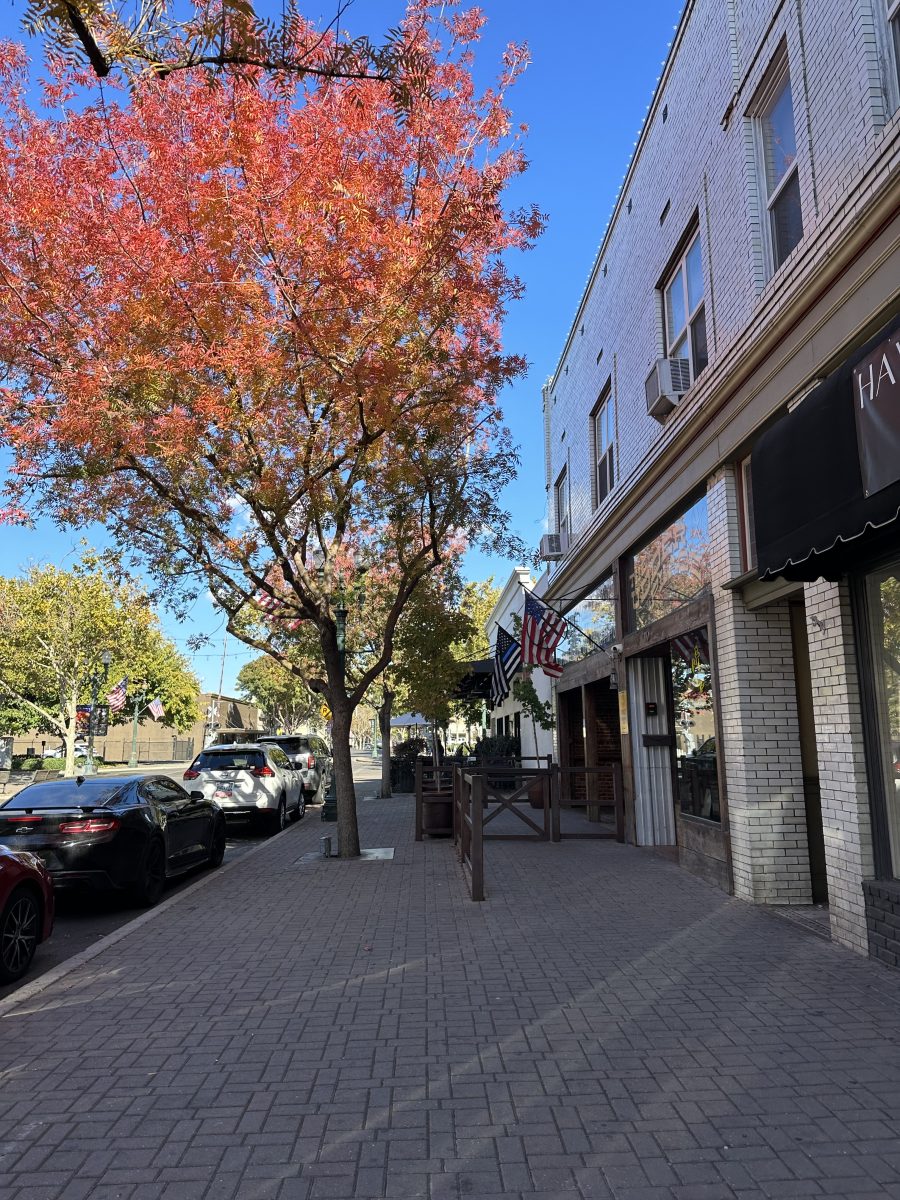California was once home to a diverse native population, who thrived in the gentle climate and ample supply of food provided by its forested mountains and clean rivers. In spite of over two hundred years of persecution and discrimination, it still is.
Indigenous people took center stage at last week’s Indigenous People’s Day celebration at CSU Stanislaus.
The gathering of indigenous speakers, students, and performers, celebrated various aspects of the indigenous people’s culture and heritage, including food, dress, storytelling, dance, and especially music.
For them, the buffalo-hide drum was more than a mere instrument: it symbolized their respect for their culture, their hope for the future, and their resilience as a people.
For many attendees, it was the first time they had heard the traditional music of their culture live.
“When they were playing the drums, in the center […] it resonated with my heartbeat,” said Cara Llewen (Junior/Communication Studies), a first-time attendee. “I really felt the connection.”
“These are songs that have been passed down to us from our ancestors,” said Choctaw Chuunya Johnson, a speaker, drummer, and activist in Indigenous Culture Revitalization. “These songs are actually our prayers.”
Guests were also treated to a selection of indigenous songs from Southern Sierra Miwuk Vice Chairman Waylan Coats, as well as a moving performance from the Sheep Ranch, California Valley Miwok Tribal Dancers.
“Songs are medicine.” said Dr Cueponcaxochitl Moreno Sandoval, Professor of Native American and Mexican Indigenous Studies at CSU Stanislaus. “To connect to them is a very special thing, so to hear them is a very great privilege.”
The hosts of the event paid careful attention to this year’s theme, “Nurturing Ancestral Roots and Indigenous Self-Determination”, providing culturally significant performances to soothe the spirit, and delicious, historically significant foods to nourish the body.
Right down to the fresh hibiscus tea, nopal salad, and mushroom-and-salmon tacos, the entire buffet was catered to give attendees a taste of their culture–a show of immense consideration and hospitality.
The night was not all fun and games, however, as speakers took time to highlight some of the challenges and tragedies facing indigenous people in California and beyond.
Before even entering the event center, guests were greeted by a bright red tepee, dotted with white handprints. Scrawled in sharpie on the heavy canvas were the names and dates: the names of indigenous people, written by their loved ones, and the dates they either went missing, or were murdered.
Sister Who Walks With Bears, President of the Missing and Murdered Indigenous Women and People of California, explained that this was the Healing Lodge: a place where indigenous people could remember and grieve the loss of their loved ones. The handprints and names were a protest against the human trafficking and violence that disproportionately affects indigenous peoples.
“People ask me, ‘how long has this been going on? That you guys have been missing and murdered?’” said Sister Who Walks With Bears. “Since 1492! I know the history books, and the schools don’t teach that!”
Sister Who Walks With Bears decried silence as violence, and urged the crowd to speak up and demand justice and change.
“A lot of the times, people say, ‘we have missing and murdered in our tribes, and we’re told to be quiet,’” said Sister Who Walks With Bears. “We’re not gonna do that.”
Speakers also brought awareness to projects to protect and preserve culturally significant land, like Tesla Park, which was used for hunting and gathering by the Northern Valley Yokuts and the Oholone people, as well as Del Puerto Canyon, which was once home to the Hiumne and Miumne Yokuts.
“At the end of the day, we all come from the exact same place: Mother Earth,” said Chickasaw ISA Alumni Brooke Hernandez Rodreiguez. “It’s extremely important to be one with the earth, and one with each other.”
“The world feels really heavy right now, considering the violence going on,” said Dr. Sandoval, who treasures Indigenous People’s Day as an opportunity to view the bigger picture, reconnect with the earth, and “remember who we are.”
Sandoval invited others to “take an intentional pause”, and truly consider:
“What is our responsibility? How are we going to continue [our ancestors’] work, through our hands, our labor, and our songs?”
If you are interested in helping preserve California’s environment, you can get involved through https://teslapark.org/ and https://www.savedelpuertocanyon.org/
If you wish to learn more about California’s indigenous peoples and cultures on campus, you can contact the Warrior Cross-Culture Center through https://www.csustan.edu/wccc.

